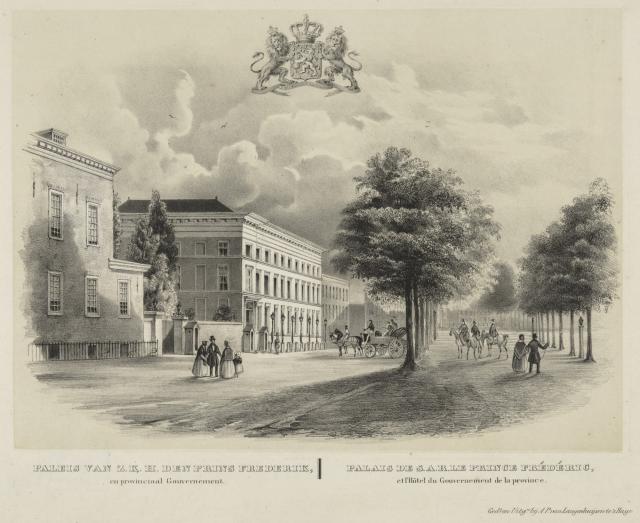The carriages of Prince Frederick
Nowadays, everyone has one or more cars. We get on trains, buses or planes without being surprised by this. We find it normal to get out of the door and travel long distances. But in Prince Frederick's time, this was anything but normal. Indeed, the common people did everything on foot and never went anywhere. Taking long trips and pleasure rides in a carriage was a luxury reserved only for the well-to-do.
A carriage in the 19th century required a hefty purse: a carriage was usually pulled by two horses, the coachman sat on the buck and there was often another palfrenier on the back. Carriages had to be maintained, horses needed shelter and food, and staff had to be paid. Moreover, there were often several carriages; Prince Frederik may have had between 15 and 25. Historians infer this from the enormous carriage house that belonged to De Paauw, where there was room for 15 carriages.
A different carriage for each purpose
Each carriage had its own function. Suitcases were transported on a suitcase brig and the staff traveled in a large omnibus, a long carriage that they could all fit into. Ladies often boarded a Victoria for pleasure rides: a half-open carriage with a low step so they wouldn't trip over their long gowns. And wealthy men went hunting in sporting carriages or showed their driving skills on a Phaeton: a light, open sports carriage in which they themselves sat on the buck. A carriage was closed and therefore excellent for longer journeys.
Coaches subject to fashion
Do you know that you can tell which era a carriage is from by its construction? New developments in technology meant that comfort was constantly improving. In addition, the appearance of a carriage was subject to fashion. So carriages were regularly replaced by a more modern one, even though the older vehicles were still quite serviceable. Even Prince Frederick was regularly tempted to purchase a new carriage. So the elite of that time did not differ much from the car enthusiasts of today!
TRAVEL
The life of the aristocracy depended on travel visits. It was a way to conduct business, maintain social contacts and make marriages. In addition, travel was a way to escape the heat of the city. Prince Frederick was also a travel-loving type. With ease he traveled from his city palace in The Hague to his estates in Wassenaar and Bad Muskau, a place on the Oder River in today's German-Polish border region. Although roads continued to improve in the nineteenth century, travel was slow. A carriage could travel about ten to twelve kilometers per hour.

Little spontaneity
Do you ever decide to go out spontaneously? In Prince Frederick's time, it was unthinkable. Every ride, however short, had enormous preparation: stable hands polished the carriage, brushed the horses and harnessed them. Servants packed things and the coachman and palfreniers put on their impeccable uniforms. Trips abroad were also prepared step by step by Prince Frederick's secretary or court marshal (head of the household). Leaving was thus a time-consuming activity that was always announced far in advance.
Pleasure trips to impress
Prince Frederik had a beautiful landscape park laid out on his estates in Wassenaar. He liked to impress his guests on pleasure rides with everything the park had to offer: stunning views, large meandering ponds, exciting vistas and whatnot. Paths were laid out especially for carriages, so that his guests could experience the park in a wonderful way while riding. Would you like to feel like a nobleman or noblewoman? Then walk or cycle (parts of) the Park Route and experience the beauty as they did in the nineteenth century!
Out and about by train
A train station was opened in Voorschoten on May 1, 1843. It was an extension of the Amsterdam-Haarlem-Leiden-The Hague railroad line. From then on, Prince Frederik regularly used the train to make visits. He was also now much quicker to reach his family in Berlin or his estate Bad Muskau. Of course, he did not sit in a compartment with other passengers. It may be hard to imagine now, but he had his own carriage which was then coupled to the train. Now that was luxurious and sized travel! The train carriage Frederick used regularly was built for Queen Anna Paulowna, wife of William II, but she died before she could use the carriage. You can admire this carriage (a little palace on wheels) at the Railway Museum in Utrecht.